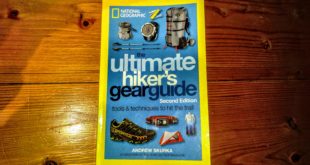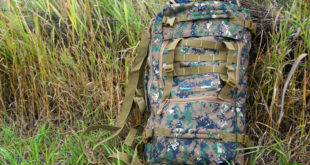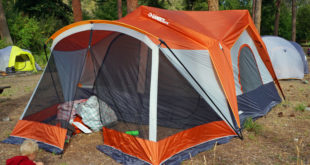Ray Mears. He knows what he’s talking about. And he put some of what he knows is in a book. That’s Raymond Mears’ “The Outdoor Survival Handbook.”
Based out of the UK and a common feature on the BBC, he’s known for his many TV survival series and experience with traditional cultures around the world. He learned from how the indigenous peoples from around the world have lived and shows others those skills that have been lost. Did I mention that he also runs a survival school? Imagine all that knowledge distilled down into 235 pages of easy to read, easy to duplicate instructions with an abundance of drawings and diagrams.
I just finished reading it and there is enough to keep you busy all year round for many a year. From survival skills, to primitive crafts and projects there’s a ton of things I want to teach and show my kids as they get older to make them feel more at home in the woods.
Let’s start with the layout. The majority of this book is structured around the seasons, divided into Spring, Summer, Autumn and Winter. Although this took me a bit to get used to, it makes a lot of sense. What we need to survive and what we can make use of varies by the season. What wildlife to expect, shelter needs, available wild edibles, etc. are all seasonal issues and best presented as such.
Of course, some outdoors skills or needs don’t have anything to do with the weather and so they book end the seasonal info.
For example, the book starts like this:
- Introduction – Everything you’d expect from an introduction.
- Clothing – the role it plays, what you should wear and how you should layer it
- Personal Kit – As he says, “Make sure that you carry what you need, and not an item more.”
- Under cover – From Hammocks to Bivy sacks to tent, it’s a brief look at the role of the different shelters.
- Base Camp Kit – For those of haven’t considered the possibility of setting up a camp and doing short expeditions from there he gives some suggestions of how you can do that.
- Cutting tools – Ray Mears’ take on different cutting tools
- Navigation – An easy to understand, but detailed section on Compass and map navigation, as well as a look at navigation with natural signs from trees to sun to stars.
- Animal tracks
- Droppings
- Feeding signs
- Winter trails
- A wide variety of shelters for individuals and groups for different climates
- Beds and bedding
- How to find, collect and purify water in every season
- It starts with the science of how a fire burns and what you need to make it
- Next it looks at different types of fires and what they’re for (cooking, drying, heating, etc)
- It looks at how to transporting fire
- as well as various tools and methods for starting them.
- Edible plants and roots
- Fish – catching, filleting, drying, cooking
- Making flours
- Primitive ovens
- Small and large games and “wasting nothing”
- Edible fungi
- Trapping
- Cordage
- knots
- Birch bark creations
- Pottery
- Basketry
- Carving
- Sap
- Wild plants and fungi for utility
- Making snow shoes
- A list of “useful addresses” which are just outdoors suppliers
- Sharpening a knife – lots of useful pictures and info to show you how you’ve been doing it wrong/right
- Coppicing – Say what? (Not even the spellcheck recognized that word). It shows how to correctly prune/cut trees and stumps to keep a tree healthy and make it a source of future bushcraft and survival resources. Did you know that if you take off a branch and don’t cut it flush with the trunk that fungus could enter and harm the tree? Neither did I.
 This book is a good balance of survival and primitive skills with lots of pictures and an easy how to format that makes the knowledge offered easy to remember and apply. It covers a wide array of subjects and projects that make long term survival a lot easier.
This book is a good balance of survival and primitive skills with lots of pictures and an easy how to format that makes the knowledge offered easy to remember and apply. It covers a wide array of subjects and projects that make long term survival a lot easier.Take a look at these other Ray Mears Books:
 The Outdoor Adventure Giving you tips, tricks & recommendations to help make adventuring in the Outdoors fun, safe & exciting for you and your kids.
The Outdoor Adventure Giving you tips, tricks & recommendations to help make adventuring in the Outdoors fun, safe & exciting for you and your kids.





